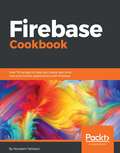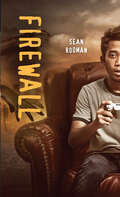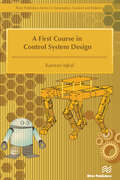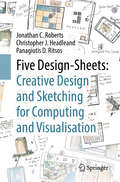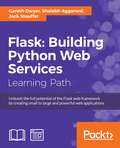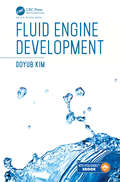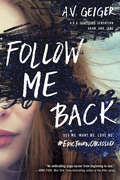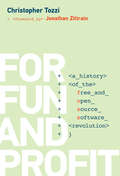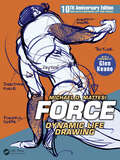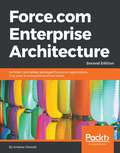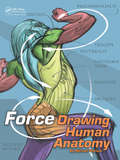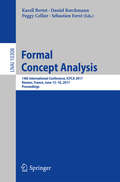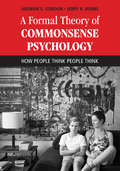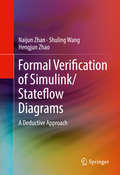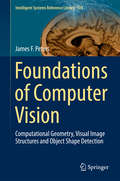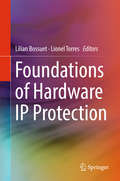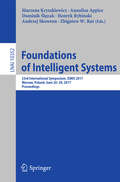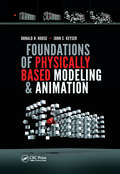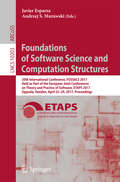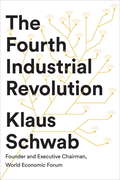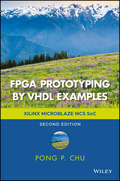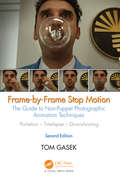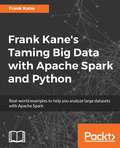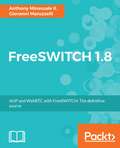- Table View
- List View
Firebase Cookbook
by Houssem YahiaouiPractical solutions for developing seamless experiences for application that scales. About This Book • A Solution based approach that would help you create high-quality apps for your businesses • Harness the power of real-time database to create apps that work on multiple platforms • Build a customized solution for your app development challenges with Firebase Who This Book Is For This book will assume you have at least a minimum set of skills in JavaScript, HTML and CSS. Also, having some familiarity with backend technologies will be helpful. After all we're going to build a backend application that will change the way backend developer works. What You Will Learn • Use Firebase Diverse Authentication systems • Integrate easy, secure File Hosting using Firebase Storage services • Make your application serverless using Firebase Cloud Functions • Use the powerful Firebase Admin SDK for privilege management • Use Firebase within NativeScript apps for cross-platform applications • Modify, structure, save and serve data in and from Realtime Database • Get acquainted with the newly introduce Cloud Firestore, a scalable database for your web and mobile applications In Detail Do you feel tired just thinking or even hearing about backend technologies, authentication or the tedious task of deployment? Firebase is here to change the way you develop and make your app a first-class citizen of the cloud. This books takes a solution based approach by providing you recipes that would help you understand the features of Firebase and implement them in your existing web or mobile applications. We start-off by creating our first Firebase application and integrating its services into different platforms and environments for mobile as well as web applications. Then we deep dive into Real-time Database and Firebase Storage that allows your users to access data across various devices with realtive ease. With each chapter you will gradually create the building blocks of your application from securing your data with Firebase Rules to authenticating your users with O-Auth. Moving along we would explore modern application development techniques such as creating serverless applications with Firebase Cloud Functions or turning your traditional applications into progressive apps with Service workers. Finally you will learn how to create cross-platform mobile apps, integrate Firebase in native platforms, and learn how to monetize your mobile applications using Admob for Android and iOS. Style and approach This recipe-based practical guide presents each topic with step-by-step instructions on how you can create collaborative and efficient progressive applications using the latest features and capabilities in Firebase.
Firewall (Orca Soundings)
by Sean RodmanJosh is a gamer. After his parents' divorce and his move from Chicago to a small town where he doesn't know anybody, he copes by staying up way too late playing Killswitch online. Then he discovers a "mod" version of the game that is an exact reproduction of his new town. Strange things start to happen in the game, and they are somehow connected with events in the real world.
A First Course in Control System Design
by Kamran IqbalControl systems are pervasive in our lives. Our homes have environmental controls. The appliances we use at home, such as the washing machine, microwave, etc. have embedded controllers. We fly in airplanes and drive automobiles, which make extensive use of control systems. The increasing automation in the past few decades has increased our reliance on control systems.A First Course in Control System Design discusses control systems design from a model-based perspective as applicable to single-input single-output systems. The emphasis in this book is on understanding and applying the techniques that enable the design of effective control systems. The book covers the time-domain and the frequency-domain design methods, as well as the design of continuous-time and discrete-time systems.Technical topics discussed in the book include: Modeling of physical systems Analysis of transfer function and state variable models Control system design via root locus Control system design in the state-space Control design of sampled-data systems Compensator design via frequency response modification
Five Design-Sheets: Creative Design and Sketching for Computing and Visualisation
by Jonathan C. Roberts Christopher J. Headleand Panagiotis D. RitsosThis book describes a structured sketching methodology to help you create alternative design ideas and sketch them on paper. The Five Design-Sheet method acts as a check-list of tasks, to help you think through the problem, create new ideas and to reflect upon the suitability of each idea. To complement the FdS method, we present practical sketching techniques, discuss problem solving, consider professional and ethical issues of designing interfaces, and work through many examples.Five Design-Sheets: Creative Design and Sketching for Computing and Visualization is useful for designers of computer interfaces, or researchers needing to explore alternative solutions in any field. It is written for anyone who is studying on a computing course and needs to design a computing-interface or create a well-structured design chapter for their dissertation, for example. We do acknowledge that throughout this book we focus on the creation of interactive software tools, and use the case study of building data-visualization tools. We have however, tried to keep the techniques general enough such that it is beneficial for a wide range of people, with different challenges and different situations, and for different applications.
Flask: Building Python Web Services
by Gareth Dwyer Shalabh Aggarwal Jack Stouffer<P><P>Unleash the full potential of the Flask web framework by creating small to large and powerful web applications <P><P>About This Book <P><P>Create your own world-class applications and master the art of Flask by unravelling its enigma through this journey <P><P>Packed with recipes containing lots of sample applications to help you understand the intricacies of Flask web programming <P><P>Work with scalable Flask application structures to create complex web apps <P><P>Who This Book Is For <P><P>This learning path is ideal developers who know the basics of Python and want to learn how to use the Flask framework to build powerful web solutions in Python. <P><P>What You Will Learn <P><P>Build three web applications from the ground up using the powerful Python micro framework, Flask. <P><P>Extend your applications to build advanced functionality, such as a user account control system using Flask-Login <P><P>Learn about web application security and defend against common attacks, such as SQL injection and XSS <P><P>Integrate with technologies like Redis, Sentry, MongoDB and so on <P><P>Build applications with integrations to most of the login mechanisms available <P><P>Don't just stop at development. Learn about deployment and post-deployment <P><P>Use SQLAlchemy to programmatically query a database <P><P>Develop a custom Flask extension <P><P>In Detail <P><P>Are you a fan of Python? Want to use it to create powerful web applications? Then Flask is the perfect choice for you. This course will take you through the intricacies of the Flask Microframework, covering all it's components and elements and how to integrate it with useful third party libraries. Dive deep into what Flask has to offer and then you will create multiple Python apps from scratch on your own. <P><P>The first module will introduce you to web development using Flask to building fully functional web applications. Hands-on and pragmatic, this tutorial goes right to the crux of Flask by showing you how to build challenging real-world applications. <P><P>The second module introduces you to a number of recipes that will help you understand the power of Flask and its extensions. Start by seeing the different configurations that a Flask application can make use of. By the end of this module, you will have gained all the knowledge required to write Flask applications in the best possible way, and scale them with best practices. <P><P>The final module will walk you through advanced Flask topics while providing practical examples of for all your lessons learned. The module closes with a discussion of the different platforms that are available to deploy a Flask app on, the pros and cons of each one, and how to deploy on each one. <P><P>This Learning Path combines some of the best that Packt has to offer in one complete, curated package. It includes content from the following Packt products: <P><P>Flask By-Example: Gareth Dwyer <P><P>Flask Framework Cookbook: Shalabh Aggarwal <P><P>Mastering Flask: Jack Stouffer <P><P>Style and approach <P><P>Filled with practical examples and recipes, this course is a great combination of example-driven learning complemented by exciting techniques to build powerful Python web applications with the Flask framework
Fluid Engine Development
by Doyub KimFrom the splash of breaking waves to turbulent swirling smoke, the mathematical dynamics of fluids are varied and continue to be one of the most challenging aspects in animation. Fluid Engine Development demonstrates how to create a working fluid engine through the use of particles and grids, and even a combination of the two. Core algorithms are explained from a developer’s perspective in a practical, approachable way that will not overwhelm readers. The Code Repository offers further opportunity for growth and discussion with continuously changing content and source codes. This book helps to serve as the ultimate guide to navigating complex fluid animation and development. Explains how to create a fluid simulation engine from scratch Offers an approach that is code-oriented rather than math-oriented, allowing readers to learn how fluid dynamics works with code, with downloadable code available Explores various kinds of simulation techniques for fluids using particles and grids Discusses practical issues such as data structure design and optimizations Covers core numerical tools including linear system and level set solvers
Follow Me Back
by A. V. Geiger"Follow Me Back is the perfect mix of fandom with just the right amount of suspense. An enthralling page turner from beginning to end." —Anna Todd, New York Times bestselling author of the After seriesTessa Hart's world feels very small. Confined to her bedroom with agoraphobia, her one escape is the online fandom for pop sensation Eric Thorn. When he tweets to his fans, it's like his speaking directly to her...Eric Thorn is frightened by his obsessive fans. They take their devotion way too far. It doesn't help that his PR team keeps posting to encourage their fantasies. When a fellow pop star is murdered at the hands of a fan, Eric knows he has to do something to shatter his online image fast—like take down one of his top Twitter followers. But Eric's plan to troll @TessaHeartsEric unexpectedly evolves into an online relationship deeper than either could have imagined. And when the two arrange to meet IRL, what should have made for the world's best episode of Catfish takes a deadly turn...Told through tweets, direct messages, and police transcripts, this thriller for the online generation will keep you guessing right up to the shocking end.
Follow the Sun: A Field Guide to Architectural Photography in the Digital Age
by James EwingFollow the Sun will guide you through all aspects of architectural photography, from the genre’s rich history to the exciting new approaches brought by the advent of the digital age. It explains how to use the powerful tools of digital photography while employing many of the skills and traditions of the established genre. Written to be accessible to professionals, amateurs, and students alike, this book will be useful for photographers exploring architecture as fine artists, on editorial assignments, or on commercial shoots. Key features include: • Example photographs and diagrams • Historical background of architectural photography • Advice on essential equipment • How to plan a shoot to your advantage • How to use tilt-shift lenses for architecture • Editing workflow and strategies • Interviews with architectural photographers Peter Aaron, Magda Biernat, Ty Cole, and Elizabeth Felicella.
For Fun and Profit: A History of the Free and Open Source Software Revolution (History of Computing)
by Christopher TozziThe free and open source software movement, from its origins in hacker culture, through the development of GNU and Linux, to its commercial use today.In the 1980s, there was a revolution with far-reaching consequences—a revolution to restore software freedom. In the early 1980s, after decades of making source code available with programs, most programmers ceased sharing code freely. A band of revolutionaries, self-described “hackers,” challenged this new norm by building operating systems with source code that could be freely shared. In For Fun and Profit, Christopher Tozzi offers an account of the free and open source software (FOSS) revolution, from its origins as an obscure, marginal effort by a small group of programmers to the widespread commercial use of open source software today. Tozzi explains FOSS's historical trajectory, shaped by eccentric personalities—including Richard Stallman and Linus Torvalds—and driven both by ideology and pragmatism, by fun and profit.Tozzi examines hacker culture and its influence on the Unix operating system, the reaction to Unix's commercialization, and the history of early Linux development. He describes the commercial boom that followed, when companies invested billions of dollars in products using FOSS operating systems; the subsequent tensions within the FOSS movement; and the battles with closed source software companies (especially Microsoft) that saw FOSS as a threat. Finally, Tozzi describes FOSS's current dominance in embedded computing, mobile devices, and the cloud, as well as its cultural and intellectual influence.
FORCE: 10th Anniversary Edition (Force Drawing Series)
by Mike MattesiBring your artwork to life with the power of the FORCE! Watch, listen, and follow along as Mike Mattesi demonstrates the fundamental FORCE line and explains dynamic figure drawing techniques through 30 videos that are launched through the book's companion App. Packed with superb, powerfully drawn examples, the updated third edition of FORCE features an all-new section on the "FORCE blob," and dozens of fresh illustrations. Mike Mattesi’s 10th anniversary edition of FORCE will teach readers how to put thought and imagination to paper. Whether you are an illustrator, animator, comic book artist, or student, you'll learn to use rhythm, shape, and line to bring out the life in any subject. The 10th Anniversary Edition contains numerous improvements. Around 30 videos are embedded within the book and accessible through the FORCE Drawing App. In the App, click on the image of the camera, point your mobile device’s camera at the page with the symbol, and then finally tap the video card image floating above the drawing to launch the video. Then sit back and watch the video that shows me creating that drawing and discussing my process. Many new drawings can be found within this edition and the addition of color now further clarifies the theory of FORCE. Key Features The unique, dynamic learning system that has helped thousands of artists enhance their figure drawing abilities Dozens of updated illustrations and all-new content, exclusive to the 3rd edition Select pages can be scanned by your smartphone or other device to pull up bonus video content, enhancing the learning process Companion App: Nearly 50 videos are available on the free FORCE Drawing companion app that can be downloaded through Google Play or the Apple App Store
Force.com Enterprise Architecture - Second Edition
by Andrew FawcettThis book is for advanced Force.com developers and architects who need to understand the Salesforce platform from the perspective of enterprise-level requirements. A prior understanding of Apex and Visualforce is a must. Those familiar with other enterprise software ecosystems will also find this book ideal as they adopt Force.com.
FORCE: Drawing Human Anatomy (Force Drawing Series)
by Mike MattesiThe newest book in Michael Mattesi’s Force Drawing series takes movement to the next level. Force: Drawing Human Anatomy, explores the different facets of motion and the human body. As opposed to the memorization technique, Mattesi stresses the function of each body part and how gravity relative to different poses affects the aesthetics and form of muscle. The chapters are divided by the different parts of the body, thus allowing the reader to concentrate on mastery one body part at a time. Color coded images detail each muscle and their different angles. Special consideration is given to anatomy for animation, allowing the reader to create a character that is anatomically accurate in both stillness and motion. Key Features Detailed visual instruction includes colourful, step-by-step diagrams that allow you to easily follow the construction of an anatomically correct figure. Clearly organized and color coded per regions of the body's anatomy, a clarity of design for better reader understanding. Learn how anatomy is drawn and defined by the function of a pose. Visit the companion website for drawing demonstrations and further resources on anatomy.
Formal Concept Analysis: 14th International Conference, ICFCA 2017, Rennes, France, June 13-16, 2017, Proceedings (Lecture Notes in Computer Science #10308)
by Karell Bertet, Daniel Borchmann, Peggy Cellier and Sébastien FerréThis book constitutes the proceedings of the 14th International Conference on Formal Concept Analysis, ICFCA 2017, held in Rennes, France, in June 2017. The 13 full papers presented in this volume were carefully reviewed and selected from 37 submissions. The book also contains an invited contribution and a historical paper translated from German and originally published in “Die Klassifkation und ihr Umfeld”, edited by P. O. Degens, H. J. Hermes, and O. Opitz, Indeks-Verlag, Frankfurt, 1986.The field of Formal Concept Analysis (FCA) originated in the 1980s in Darmstadt as a subfield of mathematical order theory, with prior developments in other research groups. Its original motivation was to consider complete lattices as lattices of concepts, drawing motivation from philosophy and mathematics alike. FCA has since then developed into a wide research area with applications much beyond its original motivation, for example in logic, data mining, learning, and psychology.
A Formal Theory of Commonsense Psychology: How People Think People Think
by Andrew S. Gordon Jerry R. HobbsCommonsense psychology refers to the implicit theories that we all use to make sense of people's behavior in terms of their beliefs, goals, plans, and emotions. These are also the theories we employ when we anthropomorphize complex machines and computers as if they had humanlike mental lives. In order to successfully cooperate and communicate with people, these theories will need to be represented explicitly in future artificial intelligence systems. This book provides a large-scale logical formalization of commonsense psychology in support of humanlike artificial intelligence. It uses formal logic to encode the deep lexical semantics of the full breadth of psychological words and phrases, providing fourteen hundred axioms of first-order logic organized into twenty-nine commonsense psychology theories and sixteen background theories. This in-depth exploration of human commonsense reasoning for artificial intelligence researchers, linguists, and cognitive and social psychologists will serve as a foundation for the development of humanlike artificial intelligence.
Formal Verification of Simulink/Stateflow Diagrams
by Naijun Zhan Shuling Wang Hengjun ZhaoThis book presents a state-of-the-art technique for formal verification of continuous-time Simulink/Stateflow diagrams, featuring an expressive hybrid system modelling language, a powerful specification logic and deduction-based verification approach, and some impressive, realistic case studies. Readers will learn the HCSP/HHL-based deductive method and the use of corresponding tools for formal verification of Simulink/Stateflow diagrams. They will also gain some basic ideas about fundamental elements of formal methods such as formal syntax and semantics, and especially the common techniques applied in formal modelling and verification of hybrid systems. By investigating the successful case studies, readers will realize how to apply the pure theory and techniques to real applications, and hopefully will be inspired to start to use the proposed approach, or even develop their own formal methods in their future work.
Foundations of Computer Vision
by James F. PetersThis book introduces the fundamentals of computer vision (CV), with a focus on extracting useful information from digital images and videos. Including a wealth of methods used in detecting and classifying image objects and their shapes, it is the first book to apply a trio of tools (computational geometry, topology and algorithms) in solving CV problems, shape tracking in image object recognition and detecting the repetition of shapes in single images and video frames. Computational geometry provides a visualization of topological structures such as neighborhoods of points embedded in images, while image topology supplies us with structures useful in the analysis and classification of image regions. Algorithms provide a practical, step-by-step means of viewing image structures. The implementations of CV methods in Matlab and Mathematica, classification of chapter problems with the symbols (easily solved) and (challenging) and its extensive glossary of key words, examples and connections with the fabric of CV make the book an invaluable resource for advanced undergraduate and first year graduate students in Engineering, Computer Science or Applied Mathematics. It offers insights into the design of CV experiments, inclusion of image processing methods in CV projects, as well as the reconstruction and interpretation of recorded natural scenes.
Foundations of Hardware IP Protection
by Lilian Bossuet Lionel TorresThis book provides a comprehensive and up-to-date guide to the design of security-hardened, hardware intellectual property (IP). Readers will learn how IP can be threatened, as well as protected, by using means such as hardware obfuscation/camouflaging, watermarking, fingerprinting (PUF), functional locking, remote activation, hidden transmission of data, hardware Trojan detection, protection against hardware Trojan, use of secure element, ultra-lightweight cryptography, and digital rights management. This book serves as a single-source reference to design space exploration of hardware security and IP protection.
Foundations of Intelligent Systems: 23rd International Symposium, ISMIS 2017, Warsaw, Poland, June 26-29, 2017, Proceedings (Lecture Notes in Computer Science #10352)
by Marzena Kryszkiewicz, Annalisa Appice, Dominik Ślęzak, Henryk Rybinski, Andrzej Skowron and Zbigniew W. RaśThis book constitutes the proceedings of the 23rd International Symposium on Foundations of Intelligent Systems, ISMIS 2017, held in Warsaw, Poland, in June 2017. The 56 regular and 15 short papers presented in this volume were carefully reviewed and selected from 118 submissions. The papers include both theoretical and practical aspects of machine learning, data mining methods, deep learning, bioinformatics and health informatics, intelligent information systems, knowledge-based systems, mining temporal, spatial and spatio-temporal data, text and Web mining. In addition, four special sessions were organized; namely, Special Session on Big Data Analytics and Stream Data Mining, Special Session on Granular and Soft Clustering for Data Science, Special Session on Knowledge Discovery with Formal Concept Analysis and Related Formalisms, and Special Session devoted to ISMIS 2017 Data Mining Competition on Trading Based on Recommendations, which was launched as a part of the conference.
Foundations of Physically Based Modeling and Animation
by Donald House John C. KeyserPhysics forms the basis for many of the motions and behaviors seen in both the real world and in the virtual worlds of animated films, visual effects, and computer games. By describing the underlying physical principles and then creating simulations based on these principles, these computer-generated worlds are brought to life. Physically Based Modeling and Animation goes behind the scenes of computer animation and details the mathematical and algorithmic foundations that are used to determine the behavior underlying the movement of virtual objects and materials. Dr. Donald House and Dr. John Keyser offer an approachable, hands-on view of the equations and programming that form the foundations of this field. They guide readers from the beginnings of modeling and simulation to more advanced techniques, enabling them to master what they need to know in order to understand and create their own animations Emphasizes the underlying concepts of the field, and is not tied to any particular software package, language, or API. Develops concepts in mathematics, physics, numerical methods, and software design in a highly integrated way, enhancing both motivation and understanding. Progressively develops the material over the book, starting from very basic techniques, and building on these to introduce topics of increasing complexity. Motivates the topics by tying the underlying physical and mathematical techniques directly to applications in computer animation.
Foundations of Software Science and Computation Structures
by Javier Esparza Andrzej S. MurawskiThis book constitutes the proceedings of the 20th International Conference on Foundations of Software Science and Computation Structures, FOSSACS 2017, which took place in Uppsala, Sweden in April 2017, held as Part of the European Joint Conferences on Theory and Practice of Software, ETAPS 2017. The 32 papers presented in this volume were carefully reviewed and selected from 101 submissions. They were organized in topical sections named: coherence spaces and higher-order computation; algebra and coalgebra; games and automata; automata, logic and formal languages; proof theory; probability; concurrency; lambda calculus and constructive proof; and semantics and category theory.
The Fourth Industrial Revolution: A Guide To Building A Better World
by Klaus SchwabWorld-renowned economist Klaus Schwab, Founder and Executive Chairman of the World Economic Forum, explains that we have an opportunity to shape the fourth industrial revolution, which will fundamentally alter how we live and work. Schwab argues that this revolution is different in scale, scope and complexity from any that have come before. Characterized by a range of new technologies that are fusing the physical, digital and biological worlds, the developments are affecting all disciplines, economies, industries and governments, and even challenging ideas about what it means to be human. Artificial intelligence is already all around us, from supercomputers, drones and virtual assistants to 3D printing, DNA sequencing, smart thermostats, wearable sensors and microchips smaller than a grain of sand. But this is just the beginning: nanomaterials 200 times stronger than steel and a million times thinner than a strand of hair and the first transplant of a 3D printed liver are already in development. Imagine "smart factories" in which global systems of manufacturing are coordinated virtually, or implantable mobile phones made of biosynthetic materials. The fourth industrial revolution, says Schwab, is more significant, and its ramifications more profound, than in any prior period of human history. He outlines the key technologies driving this revolution and discusses the major impacts expected on government, business, civil society and individuals. Schwab also offers bold ideas on how to harness these changes and shape a better future--one in which technology empowers people rather than replaces them; progress serves society rather than disrupts it; and in which innovators respect moral and ethical boundaries rather than cross them. We all have the opportunity to contribute to developing new frameworks that advance progress.From the Hardcover edition.
FPGA Prototyping by VHDL Examples: Xilinx Microblaze Mcs Soc
by Pong P. ChuA hands-on introduction to FPGA prototyping and SoC design This Second Edition of the popular book follows the same “learning-by-doing” approach to teach the fundamentals and practices of VHDL synthesis and FPGA prototyping. It uses a coherent series of examples to demonstrate the process to develop sophisticated digital circuits and IP (intellectual property) cores, integrate them into an SoC (system on a chip) framework, realize the system on an FPGA prototyping board, and verify the hardware and software operation. The examples start with simple gate-level circuits, progress gradually through the RT (register transfer) level modules, and lead to a functional embedded system with custom I/O peripherals and hardware accelerators. Although it is an introductory text, the examples are developed in a rigorous manner, and the derivations follow strict design guidelines and coding practices used for large, complex digital systems. The new edition is completely updated. It presents the hardware design in the SoC context and introduces the hardware-software co-design concept. Instead of treating examples as isolated entities, the book integrates them into a single coherent SoC platform that allows readers to explore both hardware and software “programmability” and develop complex and interesting embedded system projects. The revised edition: Adds four general-purpose IP cores, which are multi-channel PWM (pulse width modulation) controller, I2C controller, SPI controller, and XADC (Xilinx analog-to-digital converter) controller. Introduces a music synthesizer constructed with a DDFS (direct digital frequency synthesis) module and an ADSR (attack-decay-sustain-release) envelop generator. Expands the original video controller into a complete stream-based video subsystem that incorporates a video synchronization circuit, a test pattern generator, an OSD (on-screen display) controller, a sprite generator, and a frame buffer. Introduces basic concepts of software-hardware co-design with Xilinx MicroBlaze MCS soft-core processor. Provides an overview of bus interconnect and interface circuit. Introduces basic embedded system software development. Suggests additional modules and peripherals for interesting and challenging projects. The FPGA Prototyping by VHDL Examples, Second Edition makes a natural companion text for introductory and advanced digital design courses and embedded system course. It also serves as an ideal self-teaching guide for practicing engineers who wish to learn more about this emerging area of interest.
Frame-By-Frame Stop Motion: The Guide to Non-Puppet Photographic Animation Techniques, Second Edition
by Tom GasekSingle frame film-making has been around as long as film itself. It is the ancestor to modern day special effects and animation. Despite its age-old practice, Single frame film making and stop-motion animation continues to influence media and culture with its magic. Current advances in technology and classic stop motion techniques, such as pixilation, time-lapse photography and down shooting have combined to form exciting new approaches. Tom Gasek’s Frame-By-Frame Stop Motion offers hands-on experience and various tricks, tips, and exercises to help strengthen skills and produce effective results. Interviews from experts in the field offer not only offer inspiration but also help readers learn how to apply skills and new applications. The companion website offers further instruction, recommended films, tools and resources for the both the novice and the expert. Key Features Features interviews with industry experts that offer inspiration and insight as well as detailed explanations of the inner workings of non-traditional stop motion techniques, processes, and workflows Applies professional stop motion techniques that have been taught and refined in the classroom and applied to leading stop motion films, exhibiting at South By Southwest, Cannes, and more Explores the stop motion opportunities beyond model rigs and puppetry. Re-visualizes stop motion character movements, build downshooter rigs, and configures digital workflows with After Effect tutorials while creating dynamic, creative and inspired stop motion films Offers new coverage of smart phones and their application in stop motion Covers motion control, Dragon Frame, evolution of timelapse, expanded light painting, DSLR cameras, and more
Frank Kane's Taming Big Data with Apache Spark and Python
by Frank KaneFrank Kane's hands-on Spark training course, based on his bestselling Taming Big Data with Apache Spark and Python video, now available in a book. Understand and analyze large data sets using Spark on a single system or on a cluster. About This Book • Understand how Spark can be distributed across computing clusters • Develop and run Spark jobs efficiently using Python • A hands-on tutorial by Frank Kane with over 15 real-world examples teaching you Big Data processing with Spark Who This Book Is For If you are a data scientist or data analyst who wants to learn Big Data processing using Apache Spark and Python, this book is for you. If you have some programming experience in Python, and want to learn how to process large amounts of data using Apache Spark, Frank Kane's Taming Big Data with Apache Spark and Python will also help you. What You Will Learn • Find out how you can identify Big Data problems as Spark problems • Install and run Apache Spark on your computer or on a cluster • Analyze large data sets across many CPUs using Spark's Resilient Distributed Datasets • Implement machine learning on Spark using the MLlib library • Process continuous streams of data in real time using the Spark streaming module • Perform complex network analysis using Spark's GraphX library • Use Amazon's Elastic MapReduce service to run your Spark jobs on a cluster In Detail Frank Kane's Taming Big Data with Apache Spark and Python is your companion to learning Apache Spark in a hands-on manner. Frank will start you off by teaching you how to set up Spark on a single system or on a cluster, and you'll soon move on to analyzing large data sets using Spark RDD, and developing and running effective Spark jobs quickly using Python. Apache Spark has emerged as the next big thing in the Big Data domain – quickly rising from an ascending technology to an established superstar in just a matter of years. Spark allows you to quickly extract actionable insights from large amounts of data, on a real-time basis, making it an essential tool in many modern businesses. Frank has packed this book with over 15 interactive, fun-filled examples relevant to the real world, and he will empower you to understand the Spark ecosystem and implement production-grade real-time Spark projects with ease. Style and approach Frank Kane's Taming Big Data with Apache Spark and Python is a hands-on tutorial with over 15 real-world examples carefully explained by Frank in a step-by-step manner. The examples vary in complexity, and you can move through them at your own pace.
FreeSWITCH 1.8
by Anthony Minessale II Giovanni MaruzzelliBuild a robust, high-performance telephony system with FreeSWITCH About This Book • Learn how to install and configure a complete telephony system of your own, from scratch, using FreeSWITCH 1.6 • Get in-depth discussions of important concepts such as dialplan, user directory, NAT handling, and the powerful FreeSWITCH event socket • Discover expert tips from the FreeSWITCH experts, including the creator of FreeSWITCH—Anthony Minessale Who This Book Is For This book is for beginner-level IT professionals and enthusiasts who are interested in quickly getting a powerful telephony system up and running using FreeSWITCH. It would be good if you have some telephony experience, but it's not a must. What You Will Learn • Build a complete WebRTC/SIP VoIP platform able to interconnect and process audio and video in real time • Use advanced PBX features to create powerful dialplans • Understand the inner workings and architecture of FreeSWITCH • Real time configuration from database and webserver with mod_xml_curl • Integrate browser clients into your telephony service • Use scripting to go beyond the dialplan with the power and flexibility of a programming language • Secure your FreeSWITCH connections with the help of effective techniques • Deploy all FreeSWITCH features using best practices and expert tips • Overcome frustrating NAT issues • Control FreeSWITCH remotely with the all-powerful event socket • Trace packets, check debug logging, ask for community and commercial help In Detail FreeSWITCH is an open source telephony platform designed to facilitate the creation of voice and chat-driven products, scaling from a soft-phone to a PBX and even up to an enterprise-class soft-switch. This book introduces FreeSWITCH to IT professionals who want to build their own telephony system. This book starts with a brief introduction to the latest version of FreeSWITCH. We then move on to the fundamentals and the new features added in version 1.6, showing you how to set up a basic system so you can make and receive phone calls, make calls between extensions, and utilize basic PBX functionality. Once you have a basic system in place, we'll show you how to add more and more functionalities to it. You'll learn to deploy the features on the system using unique techniques and tips to make it work better. Also, there are changes in the security-related components, which will affect the content in the book, so we will make that intact with the latest version. There are new support libraries introduced, such as SQLite, OpenSS, and more, which will make FreeSWITCH more efficient and add more functions to it. We'll cover these in the new edition to make it more appealing for you. Style and approach This easy-to-follow guide helps you understand every topic easily using real-world examples of FreeSWITCH tasks. This book is full of practical code so you get a gradual learning curve.
